1/5




Water Treatment Chemical Pdd (Potassium Dimethyl Dithiocarbamate
$0.00
- FOB Price:
- Negotiable | Get Latest Price
- Order Quantity:
- 1 Set / Sets
- Supply Ability:
- 1000 Set / Sets per Month
- Port:
- shanghai
- Payment Terms:
- T/T L/C D/P D/A Credit Card PayPal Cash Escrow Other
- Delivery Detail:
- 5 days
Hot in store
Product Details
Product Name: Water Treatment Chemical Pdd (Potassium Dimethyl Dithiocarbamate Model NO.: PDD/KDD Appearance: Liquid Color: Colorless Formula: (CH3)2ncs2K CAS No.: 128-03-0 Transport Package: Drum Origin: China HS Code: 2930200090 Product Description Material Safety Data Sheet 1. Identification1.1 GHS Product identifierProduct name Potassium Dimethyl dithiocarbamate1.2 Other means of identificationProduct number -Other names N,N-dimethyl dithiocarbamate potassium salt1.3 Recommended use of the chemical and restrictions on useIdentified uses For industry use only. Corrosion inhibitors and anti-scaling agentsUses advised against no data available1.4 Supplier's detailsCompanyAddressTelephoneFax2. Hazard identificationZhenjiang Great Honest Inc.11F,West Zhongshan Rd., Zhenjiang, China2.1 Classification of the substance or mixture Skin irritation, Category 2 Hazardous to the aquatic environment, short-term (Acute) - Category Acute 1 2.2 GHS label elements, including precautionary statements Pictogram(s) Signal word WarningHazard statement(s) H315 Causes skin irritationH400 Very toxic to aquatic lifePrecautionarystatement(s) Prevention P264 Wash ... thoroughly after handling.P280 Wear protective gloves/protective clothing/eye protection/face protection. P273 Avoid release to the environment. Response P302+P352 IF ON SKIN: Wash with plenty of water/...P321 Specific treatment (see ... on this label). P332+P313 If skin irritation occurs: Get medical advice/attention. P362+P364 Take off contaminated clothing and wash it before reuse. P391 Collect spillage. Storage noneDisposal P501 Dispose of contents/container to ...2.3 Other hazards which do not result in classification: none3. Composition/information on ingredients3.1 SubstancesChemical name CAS number EC number ConcentrationPotassium Dimethyl dithiocarbamate 128-03-0 50%none Water 7732-18-5 50%4. First-aid measures 4.1 Description of necessary first-aid measures General advice Consult a physician. Show this safety data sheet to the doctor in attendance. If inhaled If breathed in, move person into fresh air. If not breathing, give artificial respiration. Consult a physician. In case of skin contact Wash off with soap and plenty of water. Consult a physician. In case of eye contact Rinse thoroughly with plenty of water for at least 15 minutes and consult a physician. If swallowed Never give anything by mouth to an unconscious person. Rinse mouth with water. Consult a physician. 4.2 Most important symptoms/effects, acute and delayed Excerpt from ERG Guide 171 [Substances (Low to Moderate Hazard)]: Inhalation of material may be harmful. Contact may cause burns to skin and eyes. Inhalation of Asbestos dust may have a damaging effect on the lungs. Fire may produce irritating, corrosive and/or toxic gases. Some liquids produce vapors that may cause dizziness or suffocation. Runoff from fire control may cause pollution. (ERG, 2016) 4.3 Indication of immediate medical attention and special treatment needed, if necessary Basic treatment: Establish a patent airway. Suction if necessary. Watch for signs of respiratory insufficiency and assist ventilations if needed. Administer oxygen by nonrebreather mask at 10 to 15 L/min. Monitor for pulmonary edema and treat if necessary ... . Monitor for shock and treat if necessary ... . Anticipate seizures and treat if necessary ... . For eye contamination, flush eyes immediately with water. Irrigate each eye continuously with normal saline during transport ... . Do not use emetics. For ingestion, rinse mouth and administer 5 ml/kg up to 200 ml of water for dilution if the patient can swallow, has a strong gag reflex, and does not drool ...dressings after decontamination ... . /Poison A and B/5. Fire-fighting measures5.1 Extinguishing mediaSuitable extinguishing media. Cover skin burns with dry sterile Excerpt from ERG Guide 171 [Substances (Low to Moderate Hazard)]: SMALL FIRE: Dry chemical, CO2, water spray or regular foam. LARGE FIRE: Water spray, fog or regularfoam. Do not scatter spilled material with high-pressure water streams. Move containers from fire area if you can do it without risk. Dike fire-control water for later disposal. FIREINVOLVING TANKS: Cool containers with flooding quantities of water until well after fire is out. Withdraw immediately in case of rising sound from venting safety devices or discoloration of tank. ALWAYS stay away from tanks engulfed in fire. (ERG, 2016) 5.2 Specific hazards arising from the chemical Excerpt from ERG Guide 171 [Substances (Low to Moderate Hazard)]: Some may burn but none ignite readily. Containers may explode when heated. Some may be transported hot. For UN3508, be aware of possible short circuiting as this product is transported in a charged state. (ERG, 2016) 5.3 Special protective actions for fire-fighters Wear self-contained breathing apparatus for firefighting if necessary. 6. Accidental release measures 6.1 Personal precautions, protective equipment and emergency procedures Use personal protective equipment. Avoid dust formation. Avoid breathing vapours, mist or gas. Ensure adequate ventilation. Evacuate personnel to safe areas. Avoid breathing dust. For personal protection see section 8. 6.2 Environmental precautions Prevent further leakage or spillage if safe to do so. Do not let product enter drains. Discharge into the environment must be avoided. 6.3 Methods and materials for containment and cleaning up Pick up and arrange disposal. Sweep up and shovel. Keep in suitable, closed containers for disposal. 7. Handling and storage 7.1 Precautions for safe handling Avoid contact with skin and eyes. Avoid formation of dust and aerosols. Avoid exposure -obtain special instructions before use.Provide appropriate exhaust ventilation at places where dust is formed. For precautions see section 2.2. 7.2 Conditions for safe storage, including any incompatibilities Store in cool place. Keep container tightly closed in a dry and well-ventilated place. 8. Exposure controls/personal protection 8.1 Control parameters Occupational Exposure limit values: no data available Biological limit values: no data available 8.2 Appropriate engineering controls Handle in accordance with good industrial hygiene and safety practice. Wash hands before breaks and at the end of workday. 8.3 Individual protection measures, such as personal protective equipment (PPE) Eye/face protection Safety glasses with side-shields conforming to EN166. Use equipment for eye protection tested and approved under appropriate government standards such as NIOSH (US) or EN 166(EU). Skin protection Wear impervious clothing. The type of protective equipment must be selected accordingto the concentration and amount of the dangerous substance at the specific workplace.Handle with gloves. Gloves must be inspected prior to use. Use proper glove removaltechnique (without touching glove's outer surface) to avoid skin contact with this product. Dispose of contaminated gloves after use in accordance with applicable laws and goodlaboratory practices. Wash and dry hands. The selected protective gloves have to satisfy the specifications of EU Directive 89/686/EEC and the standard EN 374 derived from it. Respiratory protection Wear dust mask when handling large quantities. Thermal hazards: no data available 9. Physical and chemical properties Physical state Clear, green liquid with ammonium sulfide odor.Colour Clear, colorless liquidOdour Slight amine odorMelting point/ freezing point 118-122 °CBoiling point or initial boiling point and 129.4ºC at 760 mmHgboiling rangeFlammabilityLower and upper explosion limit flammability limitFlash pointAuto-ignition temperatureDecomposition temperaturepHKinematic viscositySolubilityno data available/ no data availableClosed cup: >100°C (>212°F) no data availableno data available8.0 - 13.0 (concentrate) no data availableno data available Partition coefficient n-octanol/water (log no data availablevalue)Vapour pressure no data availableDensity and/or relative density 1.20 to 1.30 g/cm³.Relative vapour density no data availableParticle characteristics no data available 10.Stability and reactivity 10.1 Reactivity: no data available 10.2 Chemical stability: Stable under recommended storage conditions. 10.3 Possibility of hazardous reactions POTASSIUM DIMETHYLDITHIOCARBAMATE solution decomposes slowly to give hydrogen sulfide and dimethylamine. Decomposition is accelerated by acidification. Can generate flammable gases with aldehydes, nitrides, and hydrides. Incompatible with acids, peroxides, and acid halides. 10.4 Conditions to avoid: no data available 10.5 Incompatible materials: no data available 10.6 Hazardous decomposition products: no data available 11.Toxicological information Acute toxicity Oral: no data available Inhalation: no data availableDermal: no data available Skin corrosion/irritation: no data available Serious eye damage/irritation: no data available Respiratory or skin sensitization: no data availableGerm cell mutagenicity: no data availableCarcinogenicity: no data availableReproductive toxicity: no data availableSTOT-single exposure: no data availableSTOT-repeated exposure: no data availableAspiration hazard: no data available 12.Ecological information 12.1 Toxicity Toxicity to fish: LC50 Pimephales promelas (Fathead minnow) 60 ppb/96 hr (95%confidence interval: 40-89 ppb); static /formulated productToxicity to daphnia and other aquatic invertebrates: EC50 Daphnia magna (Water flea; intoxication, immobilization) 340 ppb/48 hr (95% confidence interval: 290-390 ppb); static /formulated product Toxicity to algae: no data available Toxicity to microorganisms: no data available 12.2 Persistence and degradability: no data available 12.3 Bioaccumulative potential: no data available 12.4 Mobility in soil: no data available 12.5 Other adverse effects: no data available 13. Disposal considerations 13.1 Disposal methodsProduct The material can be disposed of by removal to a licensed chemical destruction plant or by controlled incineration with flue gas scrubbing. Do not contaminate water, foodstuffs, feed or seed by storage or disposal. Do not discharge to sewer systems.Contaminated packaging Containers can be triply rinsed (or equivalent) and offered for recycling or reconditioning. Alternatively, the packaging can be punctured to make it unusable for other purposes and then be disposed of in a sanitary landfill. Controlled incineration with flue gas scrubbing is possible for combustible packaging materials. 14.Transport information 14.1 UN Number ADR/RID: UN3077 IMDG: UN3077 IATA: UN307714.2 UN Proper Shipping Name ADR/RID: ENVIRonMENTALLY HAZARDOUS SUBSTANCE, SOLID, N.O.S.IMDG: ENVIRonMENTALLY HAZARDOUS SUBSTANCE, SOLID, N.O.S.IATA: ENVIRonMENTALLY HAZARDOUS SUBSTANCE, SOLID, N.O.S. 14.3 Transport hazard class(es) ADR/RID: 9 IMDG: 9 IATA: 914.4 Packing group, if applicable ADR/RID: III IMDG: III IATA: III14.5 Environmental hazards ADR/RID: yes IMDG: yes IATA: yes14.6 Special precautions for user: no data available 15. Regulatory information 15.1 Safety, health and environmental regulations specific for the product in question Chemical name Potassium Dimethyl dithiocarbamate European Inventory of Existing Commercial Chemical Substances (EINECS) ListedEC Inventory ListedUnited States Toxic Substances Control Act (TSCA) Inventory ListedChina Catalog of Hazardous chemicals 2015 Not listedNew Zealand Inventory of Chemicals (NZIoC) ListedRepublic of Korea Chemical Inventory: ListedPhilippines Inventory of Chemicals and Chemical Substances (PICCS) ListedVietnam National Chemical Inventory Not listedChinese Chemical Inventory of Existing Chemical Substances (China IECSC) Listed 16. Other information Information on revision Abbreviations and acronyms CAS: Chemical Abstracts Service ADR: European Agreement concerning the International Carriage of Dangerous Goods byRoad RID: Regulation concerning the International Carriage of Dangerous Goods by Rail IMDG: International Maritime Dangerous Goods IATA: International Air Transportation Association TWA: Time Weighted Average STEL: Short term exposure limitLC50: Lethal Concentration 50%LD50: Lethal Dose 50% EC50: Effective Concentration 50%References IPCS - The International Chemical Safety Cards (ICSC),
Contact with Supplier
Recommend product
-
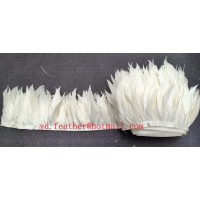
Stripped Soft Goose Fe
$3.00 -
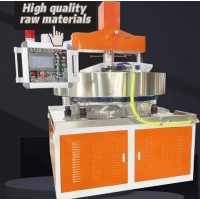
plastic ball grinding
$30000.00 -
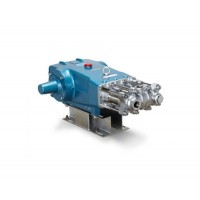
CAT piston pump 281
$4000.00 -
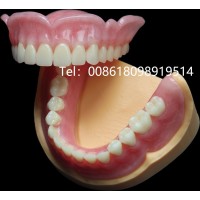
Droichead Zirconia Plu
$10.00 -
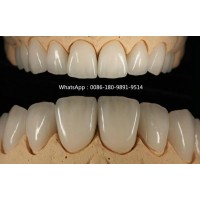
E.max crown, Veneer, I
Inquiry -
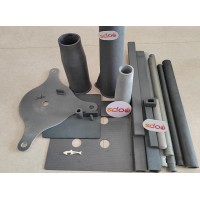
ReSiC Beams/plates/bur
$16.00 -
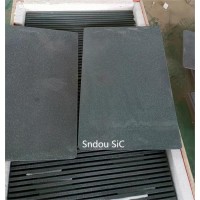
RSiC Slabs Boards Tile
$15.00 -

RSiC Batts as Kiln she
$15.00 -
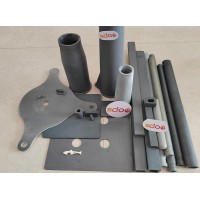
RSiC Tube by recrystal
$10.00 -
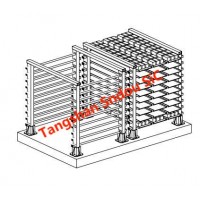
RSiC Kiln Furniture (B
$16.00 -
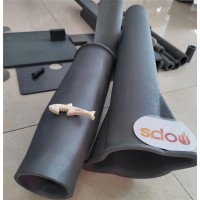
RSiC Burner Nozzle Fla
$18.00 -
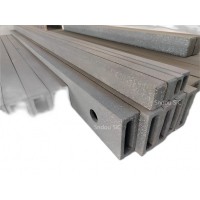
RSiC Beam Support Pill
$16.00 -
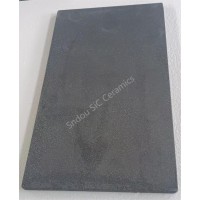
RSiC plate Slab Board
$15.00 -

NSiC Tube Pipes by Nit
Inquiry -
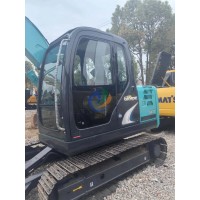
used excavator hudraul
$16600.00 -
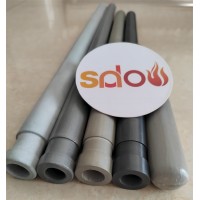
NSiC Thermocouple Prot
Inquiry -

Stalk Riser Tube for L
Inquiry -

NSiC Ceramic Heater Pr
Inquiry -

RSiC NSiC Ceramic Kiln
Inquiry -
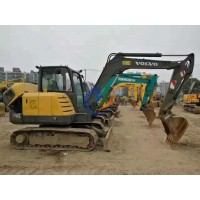
used excavator hudraul
$11500.00
Product parameters
closure
This shop is operated by agent
- Set up shop
- Authorized by Manufacturers & Suppliers online marketplace B2B platform GongWong.com, can provide agency service
- Service Introduction
- Authorized product, Internet cloud promotion service integrating certification promotion and procurement inquiry
- Intelligent website construction
- PC terminal + mobile terminal, create a cost-effective corporate website!
closure







